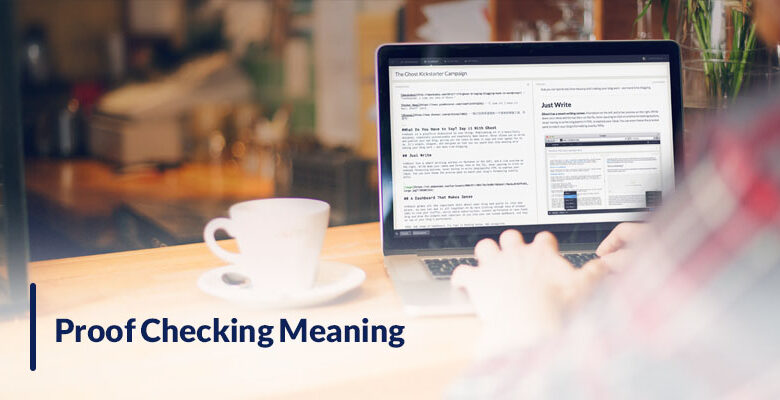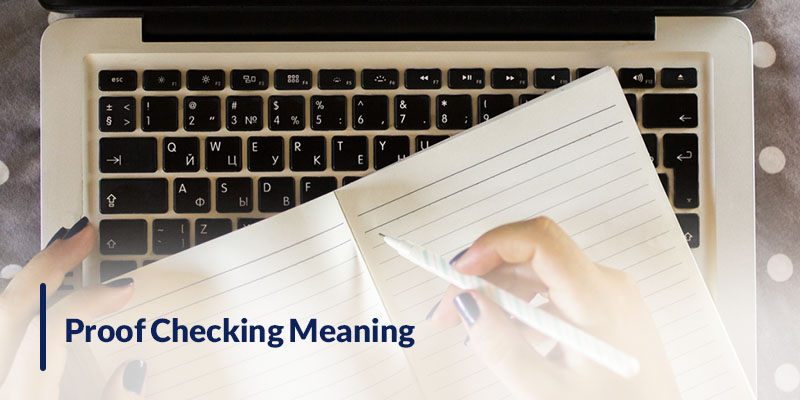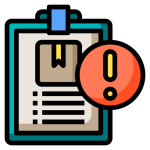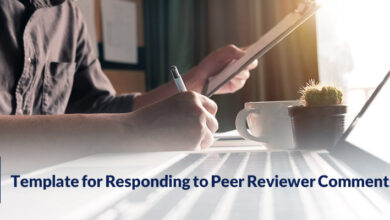Proof Checking Meaning

In this part, we are going to discuss the ending process of editing an article or any written work, including academic papers, business documents, marketing materials, and creative writing.
If you guessed proof-checking, you are correct! Here, we are learning what PrProofhecking is and how it is done. Proof checking, or proofreading, is a crucial step in the editing process, ensuring that the final product is error-free, clear, and impactful.
So, stay with us to decode the process of proofchecking.
Proofreading Definition & Process
The article proof shows you how your work will look like if it is published online or physically. Proofchecking marks the culmination of the writing process, where the author, or someone else, meticulously scrutinizes the work before it’s sent out into the world.
This final step isn’t just about checking grammar and spelling; it’s also about the design and making sure that the author’s message resonates clearly with the intended audience.
Before we publish or print any work, we need to go through some vital steps to check all our work. This is called proof checking, and it has different steps. Do you want to know how to proofread effectively? So, read this section thoroughly.

To proofread effectively, you need to pay attention to this checklist:
- Grammar: Check for correct verb tenses, subject-verb agreement, and pronoun usage.
- Spelling: Use a spell checker, but also proofread manually to catch any misspellings that the spell checker may miss.
- Punctuation: Check for proper use of commas, periods, semicolons, colons, quotation marks, and apostrophes.
- Formatting: Check for consistent font style, size, and spacing. Ensure that headings, subheadings, and paragraphs are formatted correctly.
- Accuracy: Check for factual errors, inconsistencies, and typos.
Now that you have the checklist, you can see what are the most important:
What are the most important Proofreading tips?
As you know and we mentioned above, the “Proof Checking” step is critical in the writing process, in which you can ensure that your work is error-free and conveys your message effectively.
Before giving you the tips about checking, you better know that the closer you are to finishing your writing, the more likely you are to overlook errors.
So, it is very effective if you give your mind a rest and come back to it with a fresh perspective.
Here you can find some of the most important tips for effective proofreading:
· Read Out Loud
If you read your writing aloud, it helps you identify errors in grammar, spelling, and punctuation that you might miss when reading silently. Doing this will make you listen better for awkward phrasing, inconsistencies, and any parts that don’t flow naturally.
· Proof Check in Stages
Don’t try to proofread everything at once. Use the checklist that we provided above and break the process down into smaller steps, such as paragraphs or pages. This will make the process less daunting and help you focus on one aspect at a time.
· Use A Spell & Grammar Checker
It is better to have an AI by your side to detect tiny errors. However, don’t rely solely on these tools.
· Ask Other Authors’ Help
A second proofreader can catch errors that you may have missed. Ask a colleague, friend, or other author to read your work for you.
It may not be necessary, but use different screens and fonts! It can reveal errors that you might not see on another device. Try your computer, tablet, and phone.
· Proofread For Overall Clarity & Coherence
Try to make your writing easy to understand and make sure it flows smoothly from one point to another. While proofchecking, look for any inconsistencies or confusing passages.
· Proof Check for Accuracy & Consistency
Besides checking for factual errors, typos, and any inconsistencies in information, check for consistent formatting, heading styles, and terminology throughout the document.
What Are the Free Proofreading Services? Are They Reliable?
Proof-checking services that are online and free might not help you so much; it is better to buy their primary version so you can rely on them with more relief. Here, you can find some of the online proofreading tools.
Here are the 7 online proof-checking tools that you can use to make sure you are publishing a flawless contract:
- Grammarly
- Ginger
- Polish My Writing
- Paper Rater
- Slick Write
- Spell Check Plus
- Reverso
Again, do not only rely on online services and tools and do the job yourself. You are the author, and you know better what should be checked, changed, and rewritten!
Read More: Is 5 A Good Impact Factor in a Journal?
Conclusion
Proof checking involves precisely examining written work for grammatical flaws, spelling errors, punctuation mistakes, and formatting inconsistencies.
This meticulous process elevates the quality of written content, enhancing its credibility and professionalism.
The importance of proofreading is undeniable, and it is one of the most important steps that gives you the courage to publish your work, knowing it is precise and clear.

How do you proofread your writings? Do you have any special checklists or tools? Please share your answers with us.



